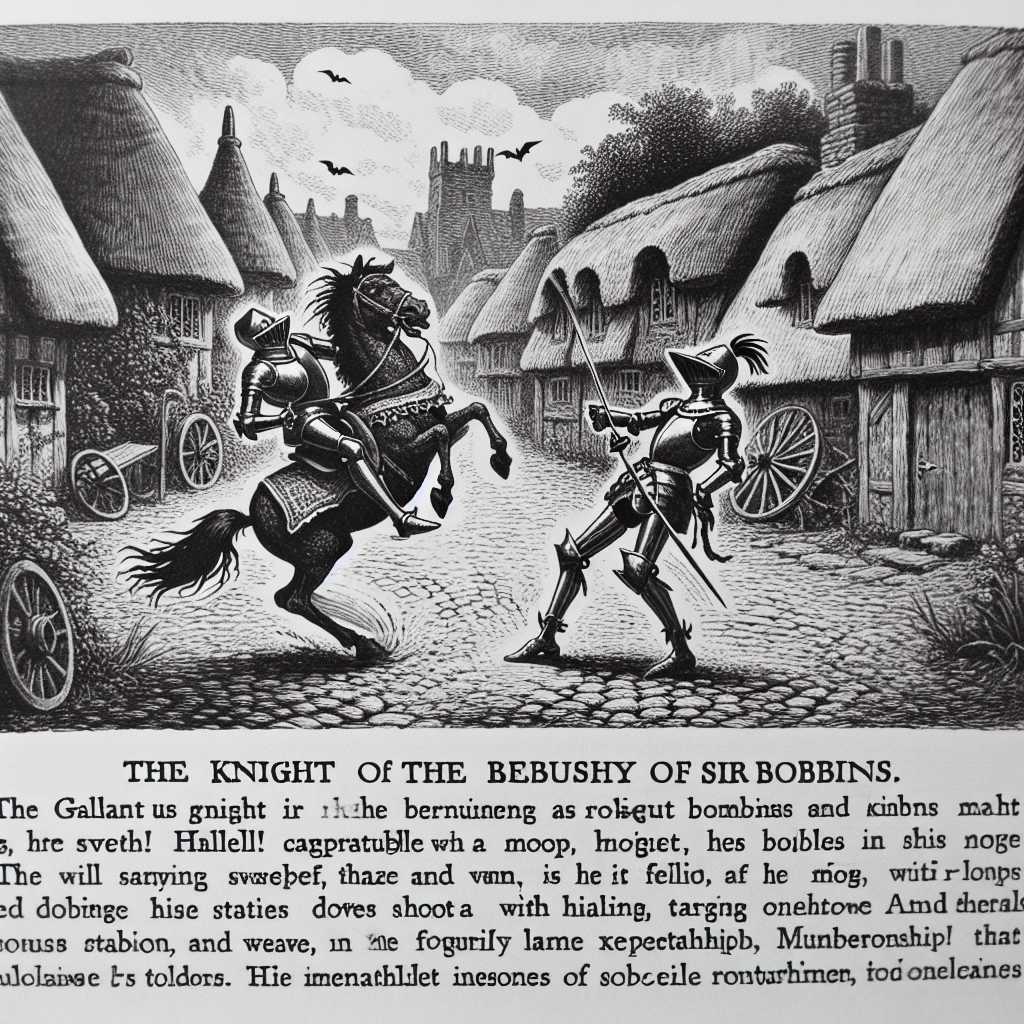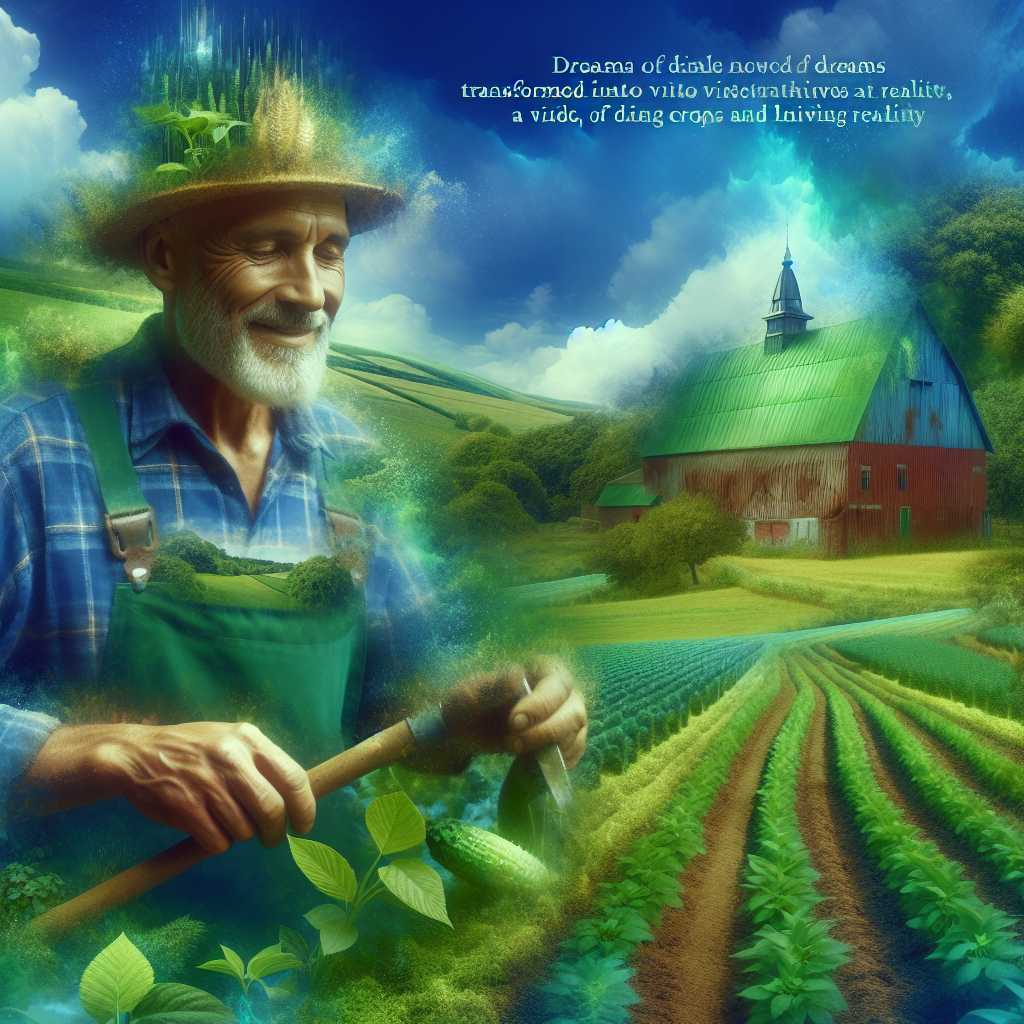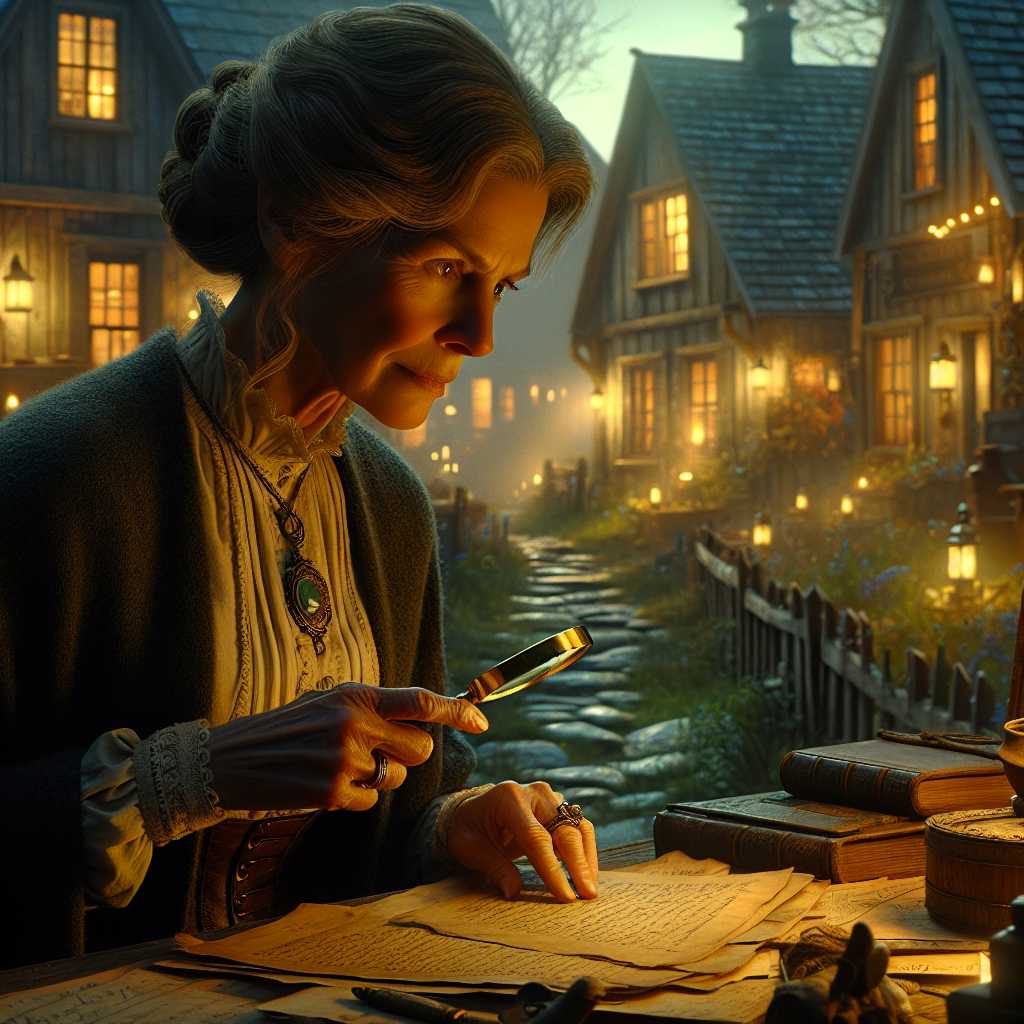
Once upon a peculiar time in a land not so far away, there lived a charmingly absent-minded knight named Sir Bobbins of Bumbleton. Sir Bobbins was known throughout the kingdom for his courage and valor, but even more so for his wild encounters with the most unexpected of inanimate objects. It is in this context, dear listeners, that we find our tale unfolding.
On a particularly windy day at Bumbleton Keep, Sir Bobbins was faced with the greatest quest of his life—or so he thought at the time. The Queen had set Sir Bobbins an unusual task: to clean the Grand Hall of all its dust monsters before the Royal Ball that evening. One might wonder why a knight was tasked with such duties, but one need consider no more than the Queen's penance for Bobbins' recent mishap with the royal carriage and his unforgettable encounter with a herd of mischievous goats.
Armed with a broom whose handle was as bent as his sense of direction, Sir Bobbins stomped into the Grand Hall with dignity only obtained through fervent determination. The hall was enormous, boasting ceilings so high that clouds often hovered inside, and chandeliers that were rumored to be magical star remnants. It would be a daunting task for a regiment of maids, never mind one singular though undeterred knight.
“Onward,” Sir Bobbins muttered to himself, swinging his broom like a battle axe toward the nearest clump of offending dust. His knightly instincts flared as he envisioned the swirling dust devils forming malicious grins, plotting his downfall with each gust he stirred.
Just as the brave Sir Bobbins was about to conquer Mount Dustmore, he was halted by an unexpected creak, one not emitted by the ancient floorboards, but rather from a long-forgotten creature tucked away in the corner—a mop, long neglected and now daring to rise to glory.
The mop’s handle stood in mournful silhouette against the dimly lit stained glass, its once pristine strings now a tangled mess resembling some forgotten bird’s nest. Sir Bobbins raised an eyebrow, or perhaps both, at the mop, gesturing with exaggerated courtesy.
“Good Sir Mop, dost thou challenge me in my quest? Alas, I did not foresee such betrayal from a fellow household implement,” Bobbins sighed with mock tragedy. But as he made to wave off his new adversary, the mop, seemingly insulted by Sir Bobbins’ underestimation, twisted rather eerily on its own accord.
With a startled jump, as dramatic as only a startled knight could manage, Sir Bobbins realized that this was no ordinary mop. The mop, infused with what could best be described as either a surplus of ambition or a dearth of sanity, wobbled ominously toward Sir Bobbins, who promptly dropped his broom in surprise.
“Oh-ho!” Bobbins declared, with a newfound spark of interest. “A duel it is then!”
In what could only be described as the most bizarre joust in Bumbleton history, the two engaged in a hilarious duel, Sir Bobbins brandishing his broom anew with the seriousness of facing a dragon. The mop, now given life as if it were the seventh wonder of the cleaning world, matched Sir Bobbins’ swipes with twirls and twisters, each movement a deft refusal to surrender.
Round and round the Grand Hall they danced, a clang of broom against mop, the latter spinning circles so swift it seemed to mimic the gustiness of a hopeful hurricane.
As they jostled, inanimate furniture became victim to their ferocious fancies. An unfortunate vase wobbled dangerously close to edge, only saved by the knight’s not-so-quick thinking, now relegating the mop to the role of the town’s newest hooligan. Sir Bobbins’ determination reached its peak as he locked horns, or rather, broomsticks, with his mop opponent beneath the curious gazes of gawking gargoyle statues.
The spectacle caught the attention of Lady Lilibeth, the castle’s meddlesome yet amusing busybody, who happened upon this peculiar sight. She hesitated not to spread the tales of the gallant Sir Bobbins’ mighty skirmish with the mop, telling perhaps enhancing—details of how Sir Bobbins deftly executed a pirouette dodging a deadly mop swipe.
It soon became a tale that spread across Bumbleton like wildfire, igniting laughter and awarding the good knight with new fame for his valorous, if whimsical, acts. The Queen, upon hearing the tale, heartily congratulated Sir Bobbins for preventing the mop revolution of 1589, as it was humorously dubbed.
Grateful for Bobbins’ unintentional evening entertainment, King Harold decided to rename the Grand Hall, “The Hall of Bobbins,” decreeing any foolhardy knight or mop that dared test its resplendent space would forever after be compared with Sir Bobbins’ legendary cleaning bravery.
Sir Bobbins, though continuously bemused by his apparent heroics, learnt a valuable lesson that day: glory might come unbidden and unaware, sometimes even in the silliest encounters.
“Mayhap,” he mused, “the true battle lies not in quests unknown, but in facing the mopficiency of our fears.”
And so it was—the mop legend of Sir Bobbins lived on, celebrated at the Royal Ball with much fanfare and jovial toasts. The Grand Hall radiated grandeur, spotless and glimmering, all thanks—or no thanks, depending on perspective—to one very scrappy and unpredictable mop.










